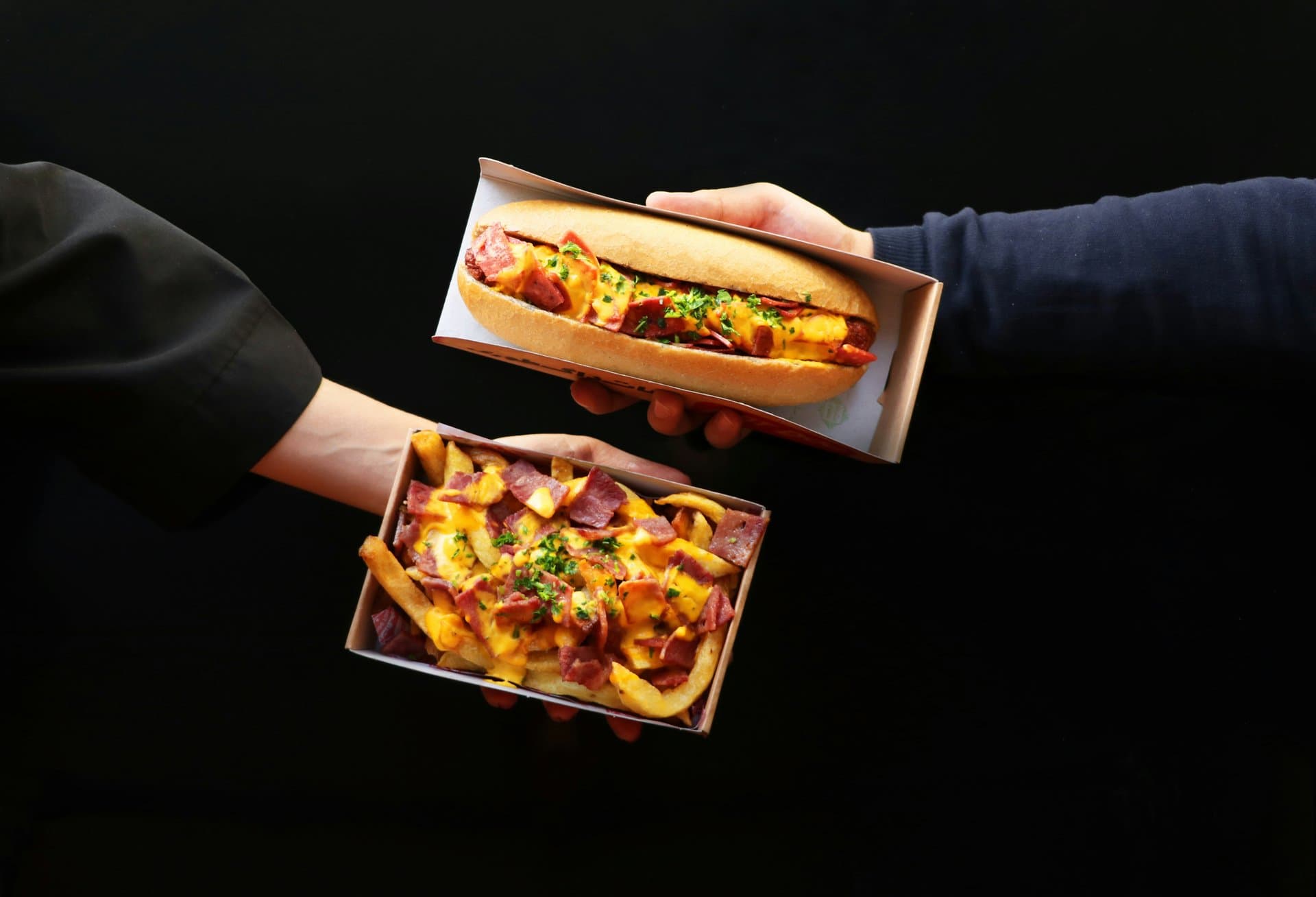Wienerschnitzel’s Walmart Partnership: Unlocking Fast Food Growth
Discover how Wienerschnitzel’s new Walmart in-store restaurants signal fresh growth strategies, blending iconic flavors with retail convenience to captivate fast-food fans and savvy franchisees alike.

Key Takeaways
- Wienerschnitzel expands via Walmart in-store restaurants
- Six new locations to open by fall 2025
- Partnership targets high-traffic retail environments
- Multi-unit franchisees key to growth strategy
- Walmart continues integrating popular fast food brands

Imagine grabbing a classic chili cheese dog while checking off your grocery list at Walmart. This soon-to-be reality comes courtesy of Wienerschnitzel, the world’s largest hot dog chain, which is partnering with Walmart to open six franchise-operated restaurants inside Walmart stores by fall 2025. Founded in 1961 as a humble hot dog stand in Wilmington, California, Wienerschnitzel has grown to 340 franchised locations across 13 states, with over 50 more in development. This bold move into Walmart’s retail giant footprint marks a fresh chapter for the brand, leveraging non-traditional locations to reach new customers and franchisees. In this article, we’ll explore how this partnership reshapes fast food growth, why it matters for franchisees, and what it means for shoppers craving iconic flavors in unexpected places.
Exploring Non-Traditional Growth
Wienerschnitzel’s journey from a single hot dog stand in 1961 to the world’s largest hot dog chain is a story of steady evolution. But the brand isn’t resting on its laurels. Instead, it’s embracing non-traditional growth avenues—think airports, military bases, theme parks, and now Walmart stores. This strategy is about more than just opening new locations; it’s about meeting customers where they already are. Imagine the convenience of grabbing a chili cheese dog while shopping for groceries—no extra stops, no fuss.
This approach also reflects a savvy understanding of today’s retail and dining landscape. With foot traffic shifting and consumer habits evolving, brands like Wienerschnitzel are rethinking how to stay relevant. By embedding itself inside Walmart, the chain taps into a built-in audience, reducing the risk and cost associated with standalone locations. It’s a win-win: customers get quick, familiar food options, and the brand expands its footprint efficiently.
Leveraging Walmart’s Retail Power
Walmart isn’t just a retail giant; it’s a cultural staple for millions of Americans seeking value and convenience. Over the years, Walmart has partnered with fast-food heavyweights like McDonald’s, Taco Bell, and Domino’s, creating a one-stop shop experience that blends shopping with dining. Wienerschnitzel’s entry into this mix is a natural fit, especially given its loyal fan base and iconic menu items like chili cheese dogs and tastee freez desserts.
By opening six franchisee-operated restaurants inside Walmart stores by fall 2025, Wienerschnitzel gains access to Walmart’s vast foot traffic and loyal shoppers. This partnership isn’t just about food; it’s about creating synergy between retail and dining that benefits both parties. For Walmart, it enhances the in-store experience. For Wienerschnitzel, it’s a strategic leap into high-traffic venues with built-in demand, accelerating brand growth without the overhead of traditional standalone outlets.
Attracting Multi-Unit Franchisees
Behind Wienerschnitzel’s expansion into Walmart lies a focused franchise growth strategy. The brand is actively courting high-ranking, multi-unit franchise candidates—entrepreneurs who operate several locations and bring operational expertise. This isn’t just about opening a hot dog stand; it’s about building scalable, sustainable business models that thrive in diverse environments.
Shak Turner, Wienerschnitzel’s Director of Franchise Expansion, highlights how the brand’s unique concept fills a void for franchisees looking to diversify portfolios. The Walmart partnership offers franchisees prime real estate with built-in customer flow, reducing startup risks. For franchisees, this means tapping into a proven brand with a fresh growth blueprint, while for Wienerschnitzel, it means accelerating market penetration and brand relevance in a competitive fast-food landscape.
Preserving Brand Identity in New Spaces
Expanding into Walmart stores presents a challenge: how to maintain Wienerschnitzel’s iconic brand appeal in a non-traditional setting. The good news? The Walmart locations will feature the chain’s full menu, including fan favorites like the chili cheese dog, junkyard dog, chili cheese fries, jalapeño poppers, and tastee freez soft serve desserts. This ensures that loyal customers won’t feel shortchanged, and newcomers get the authentic Wienerschnitzel experience.
Ted Milburn, Director of Franchise Development, emphasizes that these non-traditional formats help modernize the brand’s footprint while reinforcing its relevance. It’s a delicate balance—preserving the nostalgic charm that built the brand while adapting to new retail environments. This strategy not only satisfies existing fans but also introduces Wienerschnitzel’s flavors to fresh audiences, keeping the brand vibrant and competitive.
Forecasting Future Franchise Opportunities
While the initial rollout targets six Walmart stores by fall 2025, Wienerschnitzel’s leadership views this as a stepping stone toward broader expansion. With over 50 locations currently in development nationwide, the Walmart partnership could serve as a blueprint for future growth in other non-traditional venues. This forward-thinking approach aligns with the brand’s desire to modernize and scale efficiently.
Interestingly, the rollout excludes Pennsylvania for now, but the door remains open for future opportunities if the partnership proves successful. As retail giants like Walmart continue to innovate by blending shopping and dining, fast-food brands that adapt quickly will lead the pack. Wienerschnitzel’s move signals a new era where iconic fast food meets retail convenience, creating fresh franchise opportunities and satisfying hungry customers in one seamless stop.
Long Story Short
Wienerschnitzel’s leap into Walmart stores isn’t just about hot dogs—it’s a savvy growth play that taps into Walmart’s vast customer base and high-traffic retail spaces. By embracing non-traditional locations, the brand modernizes its footprint and opens doors for multi-unit franchisees eager to expand portfolios with built-in demand. While the initial six stores will debut by fall 2025, this partnership could well be the blueprint for future expansion across the U.S. For shoppers, it means convenience meets crave-worthy fast food under one roof. For franchisees, it’s a chance to ride the wave of a beloved brand’s new era. As retail and dining landscapes evolve, Wienerschnitzel’s strategy reminds us that innovation often comes from blending tradition with fresh, unexpected partnerships. So next time you’re at Walmart, keep an eye out—your favorite chili cheese dog might just be waiting.